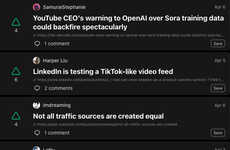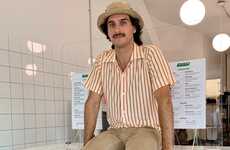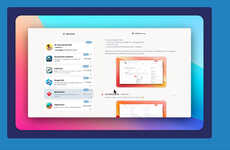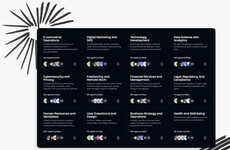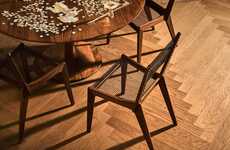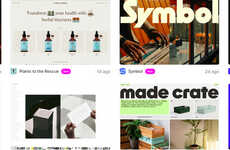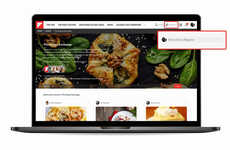
References: boingboing.net
As a Co-founder of Boing Boing, Mark Frauenfelder knows the world of Internet blogging, and is definitely on the cutting edge. Beyond his work with Boing Boing, he is a columnist for MobilePC Magazine, Editor of MAKE, author of THE MAD PROFESSOR, and a ukulele fanatic. In this interview, Mark talks about the role trends play in his work.
12 Questions with Mark Frauenfelder
1. How did you get involved with Boing Boing and what motivates you to continue?
I started Boing Boing as a print zine with my wife in 1988. Here are some photos of it.
The thing that motivates me is uncovering surprising information. I love novelty.
2. How significant are the topics of cool hunting and trend spotting to Boing Boing?
It’s always nice to be on top of a trend, or at least know of its existence as a way to understand the world around you!
3. How do you define a trend?
If there’s several blogs devoted to a subject, it’s a trend. If people start sending email to me telling me I need to blog about something on bb, it’s a trend.
4. How do you define cool?
Cool, to me, is something started or made by an enthusiast who has a love for what they are doing, and they do it in a way that communicates that enthusiasm.
5. Do you need a culture of innovation to create something that is cool?
I think so. As much as I like old stuff, you need to bring something of your creative self into what you do to make it cool.
6. What is the best way to create an infectious idea, product or service?
Make the idea, product, or service that you personally want but that doesn’t exist. Then create it!
7. What is the key to innovation?
Making lots of prototypes is very important because you will learn many things, including whether or not you want to spend the next 5 years of your life making it succeed. Pay attention to everything around you wherever you go and asking yourself how it can be used to create the thing you are trying to make.
8. What is the most important trend you see in your industry?
In the DIY world, I think the sharing of plans and tutorials is really accelerating the evolution of making things.
9. What are your ambitions for Boing Boing?
I’d like to see it become more accessible to a wider audience without turning off our current readers. This doesn’t mean changing the subjects we cover, or even how we cover them, but in how we present our content.
10. How do you reset yourself to be creative? (e.g. do you have any rituals, do you set aside time for creativity, etc.)
Taking a long walk is the best creativity booster I can think of. It turns my brain on. Sitting in front of a computer is an idea-killer, at least for me.
11. Professionally, what do you want to be doing in 10 years?
I’m actually doing what I love right now—Boing Boing, writing books, editing MAKE. I would like to start painting again, though.
12. What are your most important hobbies?
Well, painting, taking care of my chickens and bees, building cigar box guitars, whittling spoons, gardening, making yogurt, sauerkraut and kombucha, and reading.
12 Questions with Mark Frauenfelder
1. How did you get involved with Boing Boing and what motivates you to continue?
I started Boing Boing as a print zine with my wife in 1988. Here are some photos of it.
The thing that motivates me is uncovering surprising information. I love novelty.
2. How significant are the topics of cool hunting and trend spotting to Boing Boing?
It’s always nice to be on top of a trend, or at least know of its existence as a way to understand the world around you!
3. How do you define a trend?
If there’s several blogs devoted to a subject, it’s a trend. If people start sending email to me telling me I need to blog about something on bb, it’s a trend.
4. How do you define cool?
Cool, to me, is something started or made by an enthusiast who has a love for what they are doing, and they do it in a way that communicates that enthusiasm.
5. Do you need a culture of innovation to create something that is cool?
I think so. As much as I like old stuff, you need to bring something of your creative self into what you do to make it cool.
6. What is the best way to create an infectious idea, product or service?
Make the idea, product, or service that you personally want but that doesn’t exist. Then create it!
7. What is the key to innovation?
Making lots of prototypes is very important because you will learn many things, including whether or not you want to spend the next 5 years of your life making it succeed. Pay attention to everything around you wherever you go and asking yourself how it can be used to create the thing you are trying to make.
8. What is the most important trend you see in your industry?
In the DIY world, I think the sharing of plans and tutorials is really accelerating the evolution of making things.
9. What are your ambitions for Boing Boing?
I’d like to see it become more accessible to a wider audience without turning off our current readers. This doesn’t mean changing the subjects we cover, or even how we cover them, but in how we present our content.
10. How do you reset yourself to be creative? (e.g. do you have any rituals, do you set aside time for creativity, etc.)
Taking a long walk is the best creativity booster I can think of. It turns my brain on. Sitting in front of a computer is an idea-killer, at least for me.
11. Professionally, what do you want to be doing in 10 years?
I’m actually doing what I love right now—Boing Boing, writing books, editing MAKE. I would like to start painting again, though.
12. What are your most important hobbies?
Well, painting, taking care of my chickens and bees, building cigar box guitars, whittling spoons, gardening, making yogurt, sauerkraut and kombucha, and reading.
Trend Themes
1. Cool Hunting and Trend Spotting - Disruptive innovation opportunity: Develop a platform or service that helps businesses identify and stay ahead of emerging trends and cool products.
2. DIY Evolution - Disruptive innovation opportunity: Create a digital marketplace that facilitates the sharing of plans and tutorials for DIY projects, accelerating the evolution of making things.
3. Accessible Content Curation - Disruptive innovation opportunity: Build a content curation platform that makes trending and relevant information more accessible to a wider audience without alienating existing readers.
Industry Implications
1. Blogging and Online Content - Disruptive innovation opportunity: Develop an AI-driven content creation tool that helps bloggers and content creators uncover surprising information and create engaging content.
2. DIY and Maker Movement - Disruptive innovation opportunity: Launch a subscription service that delivers monthly DIY project kits along with detailed step-by-step instructions and video tutorials.
3. Publishing and Media - Disruptive innovation opportunity: Create an interactive digital magazine platform that offers a unique and immersive reading experience with integrated multimedia content.
5.2
Score
Popularity
Activity
Freshness

